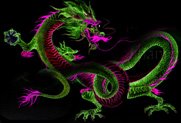Chinese Traditional Costume : Qipao
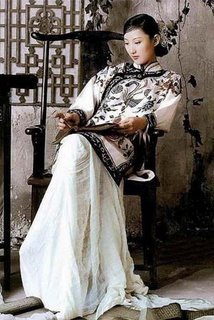 The cheongsam is a traditional dress worn by Chinese women, typified by a high collar, long length (mid-calf usually) and button or frog closures near the shoulder. This fitted dress is often made up in shimmering silk, embroidered satin or other sensual fabrics. Best on athletic or slim figures, the cheongsam is an acceptable alternative to the little black dress for special occasions.
The cheongsam is a traditional dress worn by Chinese women, typified by a high collar, long length (mid-calf usually) and button or frog closures near the shoulder. This fitted dress is often made up in shimmering silk, embroidered satin or other sensual fabrics. Best on athletic or slim figures, the cheongsam is an acceptable alternative to the little black dress for special occasions.Cheongsam(Qipao) is a chinese female dress with distinctive Chinese features and enjoys a growing popularity in the international world of fashion. This body-hugging dress for women in China originating from the Manchus in the early 17th century, modernized and improved in Shanghai around 1900.
 The name "cheongsam," stands for "long dress," comes from the dialect of China's Guangdong Province (Cantonese). In other parts of the country including Beijing, however, it is known as "qipao".
The name "cheongsam," stands for "long dress," comes from the dialect of China's Guangdong Province (Cantonese). In other parts of the country including Beijing, however, it is known as "qipao".Easy and comfortable to wear, cheongsam fits well the Chinese female figure. Its high neck, closed collar, and its sleeves may be either short, medium or full length, depending mainly on season and taste. The dress is buttoned on the right or lefr side, with a loose chest, a fitting waist, and slits up from the sides, all of which combine to set off the beauty of the female shape.
 The cheongsam is not too complicated to make. Not only it calls for little material, but also for there are no accessories like belts, scarves, sashes or frills. Besides its simplicity, Qipao provides designers with vast and creative space: some short, some long, with low, high, or even no collars at all.
The cheongsam is not too complicated to make. Not only it calls for little material, but also for there are no accessories like belts, scarves, sashes or frills. Besides its simplicity, Qipao provides designers with vast and creative space: some short, some long, with low, high, or even no collars at all.Today, with its variety of styles, more and more women in China appreciate its beauty. In many occasions, cheongsam is their first choice among dresses. Actually, lots of influential people have suggested that this kind of dress should become the national dress for women in China. This shows that it remains an important part of Chinese culture.











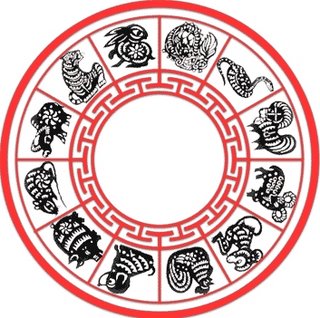 The twelve animals in the cycle derive from a legend about Buddha who invited all the animals to join him for Chinese New Year's Day. Only twelve animals went to see Buddha. As a reward he promised to name a year for each one in order of their arrival, these were the rat, ox, tiger, hare, dragon, snake, horse, sheep, monkey, cock, dog and boar.
The twelve animals in the cycle derive from a legend about Buddha who invited all the animals to join him for Chinese New Year's Day. Only twelve animals went to see Buddha. As a reward he promised to name a year for each one in order of their arrival, these were the rat, ox, tiger, hare, dragon, snake, horse, sheep, monkey, cock, dog and boar. In general
In general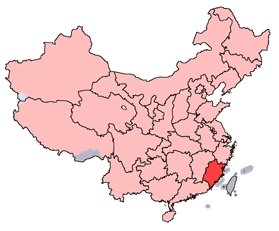 Fujian faces to the island of Taiwan. In the north Fujian borders to Zhejiang, Jiangxi to the west and to the south Guangdong China.
Fujian faces to the island of Taiwan. In the north Fujian borders to Zhejiang, Jiangxi to the west and to the south Guangdong China.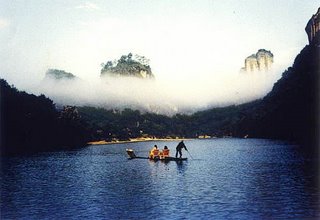 Mount Wuyi (Wu Yi Shan) you will impressed with its beautiful mountains and transparent waters. Including Gulangyu Island or nickname “The Garden on the Sea” this is the heaven of sea breezes and sunshine you will feel like travel in Mediterranean.
Mount Wuyi (Wu Yi Shan) you will impressed with its beautiful mountains and transparent waters. Including Gulangyu Island or nickname “The Garden on the Sea” this is the heaven of sea breezes and sunshine you will feel like travel in Mediterranean. If you are the one who addict to drink tea, you would know Oolong tea which is mild and good aromatic and Oolong tea from Fujian China is the best product that you can’t miss to shop for souvenir.
If you are the one who addict to drink tea, you would know Oolong tea which is mild and good aromatic and Oolong tea from Fujian China is the best product that you can’t miss to shop for souvenir.

 The main features of Chinese Opera are a spectacle of song and dance which, together with the colorful costumes, make-up, acrobats, jesters, storytellers, acting, poetry and martial arts combine to present the Opera in a very attractive way. This is the another way to perform people know about China.
The main features of Chinese Opera are a spectacle of song and dance which, together with the colorful costumes, make-up, acrobats, jesters, storytellers, acting, poetry and martial arts combine to present the Opera in a very attractive way. This is the another way to perform people know about China. Majority of the chinese opera's clothing design came from the Ming Dynastys of China. The hand-made clothing that delicate in every details, embroideries, pinning or jeweled girdles. Attractive features peoply by their different styles of face painting and hairdresses of each performer.
Majority of the chinese opera's clothing design came from the Ming Dynastys of China. The hand-made clothing that delicate in every details, embroideries, pinning or jeweled girdles. Attractive features peoply by their different styles of face painting and hairdresses of each performer. This enabled it to be ranked among the World Oral and Intangible Heritages. Qinqiang opera from Shaanxi, known for its loudness and wildness, and Yu opera, Yue opera, and Huangmei Opera are all very enjoyable.
This enabled it to be ranked among the World Oral and Intangible Heritages. Qinqiang opera from Shaanxi, known for its loudness and wildness, and Yu opera, Yue opera, and Huangmei Opera are all very enjoyable.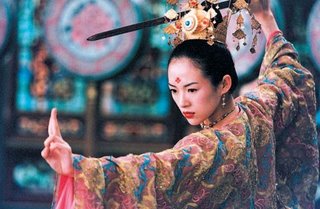
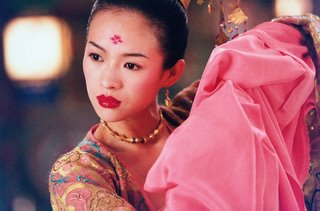 Her entrance into the dance world came when she was 11, as she was accepted to a secondary school affiliated with Beijing Dancing College China. During the 4 years that she was trained in dance, she managed to pick up some awards, including one at the National Young Dancer competition in China.
Her entrance into the dance world came when she was 11, as she was accepted to a secondary school affiliated with Beijing Dancing College China. During the 4 years that she was trained in dance, she managed to pick up some awards, including one at the National Young Dancer competition in China.
 Chinese media have speculated that flashes of underwear and other "inappropriate" images in the China scenes of Mission Impossible 3 (MI3) might jeopardise the mainland release of Tom Cruise's latest Hollywood blockbuster.
Chinese media have speculated that flashes of underwear and other "inappropriate" images in the China scenes of Mission Impossible 3 (MI3) might jeopardise the mainland release of Tom Cruise's latest Hollywood blockbuster.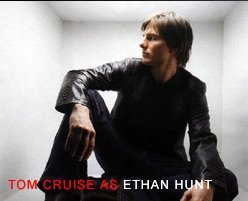 The paper also said that many movie-goers found the scenes shot in Shanghai China and the village of Xitang China "inappropriate", given both locations "became places for the storage of terrorists' chemical weapons".
The paper also said that many movie-goers found the scenes shot in Shanghai China and the village of Xitang China "inappropriate", given both locations "became places for the storage of terrorists' chemical weapons". Since Chengdu is home to the panda, the area is also home to bamboo. Apart from food for the bears, bamboo is used to make covers and mats for vases, teapots, bowls, caskets etc. Only a special type of bamboo is used to make these pieces.
Since Chengdu is home to the panda, the area is also home to bamboo. Apart from food for the bears, bamboo is used to make covers and mats for vases, teapots, bowls, caskets etc. Only a special type of bamboo is used to make these pieces. Chengdu is one of the major producers of lacquer ware. The Chinese name the different types of laquerware according to the method of production. Many different types of laquer product are produced in Chengdu including wall decorations and screens.
Chengdu is one of the major producers of lacquer ware. The Chinese name the different types of laquerware according to the method of production. Many different types of laquer product are produced in Chengdu including wall decorations and screens. Silk tapestry are hand made rugs which use silk and spun silk as materials. After the tapestry has been spun by machine, the pattern is delicately woven by hand. This is a popular wall hanging. The tapestry is smooth and sleek and to touch it feels soft and springy. China exports this product to the west and southeast Asia and this makes a lovely souvenir.
Silk tapestry are hand made rugs which use silk and spun silk as materials. After the tapestry has been spun by machine, the pattern is delicately woven by hand. This is a popular wall hanging. The tapestry is smooth and sleek and to touch it feels soft and springy. China exports this product to the west and southeast Asia and this makes a lovely souvenir. Chengdu has long been famous for its silverware. Chengdu silver is produced from extremely thin and fine threads of metal, which are as thin as hair. The delicate pieces are welded together and made into jewelry, wall decorations, table decorations and other pretty pieces.
Chengdu has long been famous for its silverware. Chengdu silver is produced from extremely thin and fine threads of metal, which are as thin as hair. The delicate pieces are welded together and made into jewelry, wall decorations, table decorations and other pretty pieces.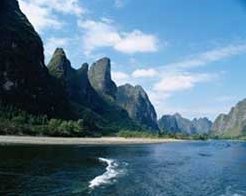 The 83-km-long waterway from Guilin to Yangshuo is the masterpiece of Li River (Lijiang) China, decorated with rolling hills, steep cliffs, fantastic caves, leisurely boats and lined bamboos which is just like enjoying a melodious symphony.
The 83-km-long waterway from Guilin to Yangshuo is the masterpiece of Li River (Lijiang) China, decorated with rolling hills, steep cliffs, fantastic caves, leisurely boats and lined bamboos which is just like enjoying a melodious symphony.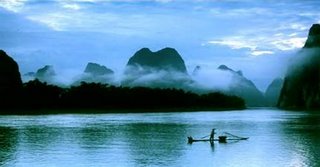 The most beautiful scenes of Guilin China scenery are found along the Li-River (Lijiang).The hills beyond hills with their reflections in the crystal clear water are like fairy land, the green bamboo greets you all the way along the river in the breeze.
The most beautiful scenes of Guilin China scenery are found along the Li-River (Lijiang).The hills beyond hills with their reflections in the crystal clear water are like fairy land, the green bamboo greets you all the way along the river in the breeze. The Lijiang River (Lijiang)Guilin China with crystal-clear waters twists and turns between splendid and beautiful mountains.
The Lijiang River (Lijiang)Guilin China with crystal-clear waters twists and turns between splendid and beautiful mountains. Old Summer Palace Beijing China lies in total ruin, blasted into fragments by the Anglo-French invasion force during the 1860 Opium War.The sprawling compound has an aura of faded glory like the Roman Forum. Its ruined pathways, gutted pavilions, and unruly vegetation fill the place with a "sublime" horror.
Old Summer Palace Beijing China lies in total ruin, blasted into fragments by the Anglo-French invasion force during the 1860 Opium War.The sprawling compound has an aura of faded glory like the Roman Forum. Its ruined pathways, gutted pavilions, and unruly vegetation fill the place with a "sublime" horror. Old Summer Palace(yuan ming yuan, the Perfection and Brightness Garden) was a palace in Beijing, China.
Old Summer Palace(yuan ming yuan, the Perfection and Brightness Garden) was a palace in Beijing, China.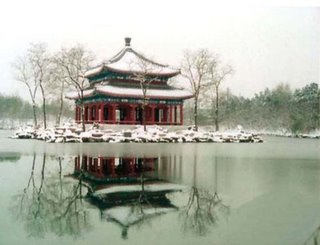 Old Summer Palace Beijing China was first surveyed in the 12th century and had been developed into a network of gardens by the time of Emperor Qianlong's regimen the late 18th century.
Old Summer Palace Beijing China was first surveyed in the 12th century and had been developed into a network of gardens by the time of Emperor Qianlong's regimen the late 18th century.
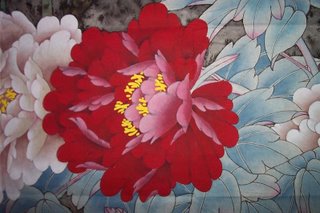 Hou Yih had a beautiful wife named Chang-O. Chang-O was as curious as she was beautiful. One day she found the pill and without telling her husband, she swallowed it.
Hou Yih had a beautiful wife named Chang-O. Chang-O was as curious as she was beautiful. One day she found the pill and without telling her husband, she swallowed it.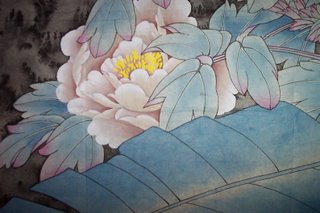 The Moon Festival is a big holiday with family reunions, moon gazing activities, and feasting on "moon cakes" which are round pastries filled with red bean paste, fruit or jam. Dragon and lion dances, whose origins also date back to ancient China, are wonderful dances done during festivals, especially exciting are the dragon and lion dances.
The Moon Festival is a big holiday with family reunions, moon gazing activities, and feasting on "moon cakes" which are round pastries filled with red bean paste, fruit or jam. Dragon and lion dances, whose origins also date back to ancient China, are wonderful dances done during festivals, especially exciting are the dragon and lion dances. During the Yuan dynasty (A.D.1280-1368) China was ruled by the Mongolian people. Leaders from the preceding Sung dynasty (A.D.960-1280) were unhappy at submitting to foreign rule, and set how to coordinate the rebellion without it being discovered.
During the Yuan dynasty (A.D.1280-1368) China was ruled by the Mongolian people. Leaders from the preceding Sung dynasty (A.D.960-1280) were unhappy at submitting to foreign rule, and set how to coordinate the rebellion without it being discovered. The atmosphere is intensely dry nine months of the year. Western passes receive small amounts of fresh snow each year but remain traversable year round.
The atmosphere is intensely dry nine months of the year. Western passes receive small amounts of fresh snow each year but remain traversable year round. For those real adventure people, drive a 4-wheel vehicle to Tibet is a better choice! It needs better physical conditions, more time, more money, and a lot of courage and determination.
For those real adventure people, drive a 4-wheel vehicle to Tibet is a better choice! It needs better physical conditions, more time, more money, and a lot of courage and determination.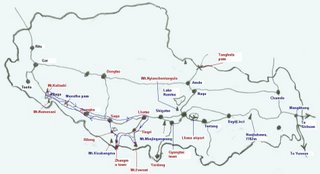 Among the above routes, driving from Qinghai or Kathmandu ("friendship highway") are easier. We do not suggest you drive to Tibet from the other ways except you are "professional" adventurers with all the necessary gears and backup.
Among the above routes, driving from Qinghai or Kathmandu ("friendship highway") are easier. We do not suggest you drive to Tibet from the other ways except you are "professional" adventurers with all the necessary gears and backup.
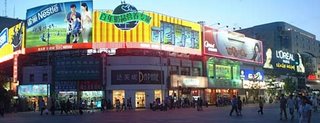 As the most famous shopping center in Beijing, it boasts many reputed shops such as New Dong'an Bazaar, Department Store, Arts and Crafts Mansion, China Photo Studio,
As the most famous shopping center in Beijing, it boasts many reputed shops such as New Dong'an Bazaar, Department Store, Arts and Crafts Mansion, China Photo Studio, It is flanked by some big shops and markets such as Jinlun Mansion and New World malls, Hongqiao and Ciqikou markets selling farm produce and aquatic products, and Heavenly Temple Market selling flowers and pot plants.
It is flanked by some big shops and markets such as Jinlun Mansion and New World malls, Hongqiao and Ciqikou markets selling farm produce and aquatic products, and Heavenly Temple Market selling flowers and pot plants. Beijing will invest a total of 12.2 billion U.S. dollars in protecting the ecological environment in the period of 1998-2007.
Beijing will invest a total of 12.2 billion U.S. dollars in protecting the ecological environment in the period of 1998-2007. They are referred to as Cherchan Mummies, Tarim Basin Mummies, Takla Makan Mummies, Urumchi Mummies, the Desert Mummies, Qawrighut (where Loulan was found), etc.
They are referred to as Cherchan Mummies, Tarim Basin Mummies, Takla Makan Mummies, Urumchi Mummies, the Desert Mummies, Qawrighut (where Loulan was found), etc.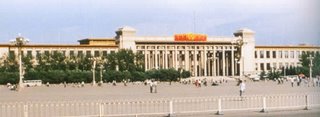 One famous national museum in China is The National Museum of
One famous national museum in China is The National Museum of 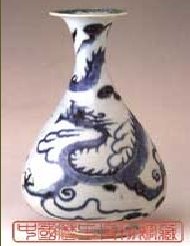 The National Museum of China, a four-storied main building with two symmetrical wings, runs more than 300 meters north and south along the eastern side of Tian'anmen Square.
The National Museum of China, a four-storied main building with two symmetrical wings, runs more than 300 meters north and south along the eastern side of Tian'anmen Square.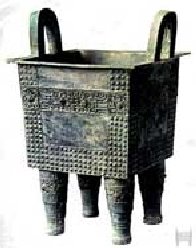 The building was one of ten famous architectures built in 1959 to mark the 10th anniversary of the founding of the People's Republic. The Museum of Chinese History was in the South Wing while the North Wing housed the Museum of the Chinese Revolution.
The building was one of ten famous architectures built in 1959 to mark the 10th anniversary of the founding of the People's Republic. The Museum of Chinese History was in the South Wing while the North Wing housed the Museum of the Chinese Revolution. Chinese live with their strict culture and belief long time ago. They also believe and respect to animals and one animal is the symbol of China and live with them for thousand years ago is dragon.You will find there are dragon images anywhere in China, temples, royal palaces or even king and queen's clothes.
Chinese live with their strict culture and belief long time ago. They also believe and respect to animals and one animal is the symbol of China and live with them for thousand years ago is dragon.You will find there are dragon images anywhere in China, temples, royal palaces or even king and queen's clothes. Dragon cultures exit in both the Eastern and Western world. Dragons are deeply rooted in Chinese culture, so Chinese often consider themselves, 'the descendants of the dragon.'
Dragon cultures exit in both the Eastern and Western world. Dragons are deeply rooted in Chinese culture, so Chinese often consider themselves, 'the descendants of the dragon.' There are many Chinese stories about the dragon. There is even a very famous Chinese idiom, 'Lord Ye's Love of Dragons,' which means professed love of what one really fears. Here is the story behind the idiom. Lord Ye loved dragons deeply.
There are many Chinese stories about the dragon. There is even a very famous Chinese idiom, 'Lord Ye's Love of Dragons,' which means professed love of what one really fears. Here is the story behind the idiom. Lord Ye loved dragons deeply. The Prayer Hall is the main building of the Temple of Heaven Beijing
The Prayer Hall is the main building of the Temple of Heaven Beijing  The repair work started last May and was completed with an investment of 47 million yuan (US$5.8 million), according to the Temple of Heaven administration.
The repair work started last May and was completed with an investment of 47 million yuan (US$5.8 million), according to the Temple of Heaven administration.